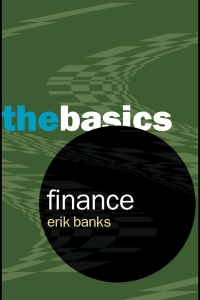Answered step by step
Verified Expert Solution
Question
1 Approved Answer
Hello, I had someone answered my question on problem 5. But my question is how did they find the answers for the section on computation?



Hello, I had someone answered my question on problem 5. But my question is how did they find the answers for the section on "computation"? Because I can't figure it out on how did they got the answers for year 2, 56250; year 3, 42187etc. Thank you.
landscape onantation and fit-to-1 page scaling. Check figure: DDB depreciation for you fon E31. $43.750 3 in the space below. prepare the journal entry to record the depreciation taken in Year under the units of production method WHAT IF ANALYSIS 4 To test your formulas, assume the machine purchased had an estimated useful life of three years (20,000, 30.000, and 50,000 hours, respectively). Enter the new information in the Data Section of the worksheet. Does your depreciation total $320,000 under all three methods? There are three common errors made by students completing this worksheet. Let's clear up two of them. One, an asset that has a three-year lite should have no depreciation claimed in Year 4. This can be corrected using an =IF statement in Year 4. For example, the correct formula in cell 032 is alF(B3209.0.(07-08)/D9) or IF(B3%D9.0.SLN(D7 DB,09). You may wish to edit what you have already entered rather than retype it. Two, as mentioned in requirement 2, the double-declining balance calculation needs to be modified in the last year of the asset's life. Assuming you have already modified the formula for Year 4 (per instructions in step 2). alter the formula for Year 3 also you corrected any formulas, test their correctness by trying different estimated useful lives (between 3 and B) in cell E9. Then reset the Data Section to the original values, save the revised file as DEPREC2, and reprint the worksheet to show the correct formulas The third common error doesnt need to be corrected in this problem. The general form of the double-declining balance formula needs to be modified to check the net book value of the asset each year to make sure it does not go below salvage value. -DDB does this automatically, but if you are writing your own formulas, this gets very complicated and is beyond the scope of the problem. 5 A truck was recently purchased for $75,000 with a salvage value of $5,000 and an estimated useful life of eight years or 150,000 miles (24,000 mies per year for the first five years and worksheet Again, make sure the totals for all three methods are in agreement. Print the worksheet. Save this new data as DEPREC5. 53 2:25 44% + Answer 1 of 1 + Solution: For Double Declining Balance Mehod, Rate of Depreciation = (1/8)*2 = 25% We calculate Depreciation on the carrying value of the asset purchased the initial value is $75000. We carry on with is calculation until we reach a point where the carrying value does not drop below the salvage / residual value. See the following calculation for better understanding 2009 22 15158 HO SA 27 hr LA 28 02.100.000 31 1000 In the above calculations till year 7 the book value is well above the residual value, Year 8 being the last year for depreciation, we need to adjust the amount of depreciation so that the book value of the asset is equal to the salvage value. Here the depreciation so calculated using DDB in year 8 is 10011*25% = $ 2502.75, does not equate the book value to 5000. Hence we adjust the depreciation so that we bring down the value to 5000. Hope this helps! In case of any clarifications, kindly use the comment box below 2:40 .3 computation 175000*25% 256250*25% 3/42187*25% 431641*25% 5123730*25% 617798*25% 713348*25% 810011*25% or (10011- tal rtStep by Step Solution
There are 3 Steps involved in it
Step: 1

Get Instant Access to Expert-Tailored Solutions
See step-by-step solutions with expert insights and AI powered tools for academic success
Step: 2

Step: 3

Ace Your Homework with AI
Get the answers you need in no time with our AI-driven, step-by-step assistance
Get Started


